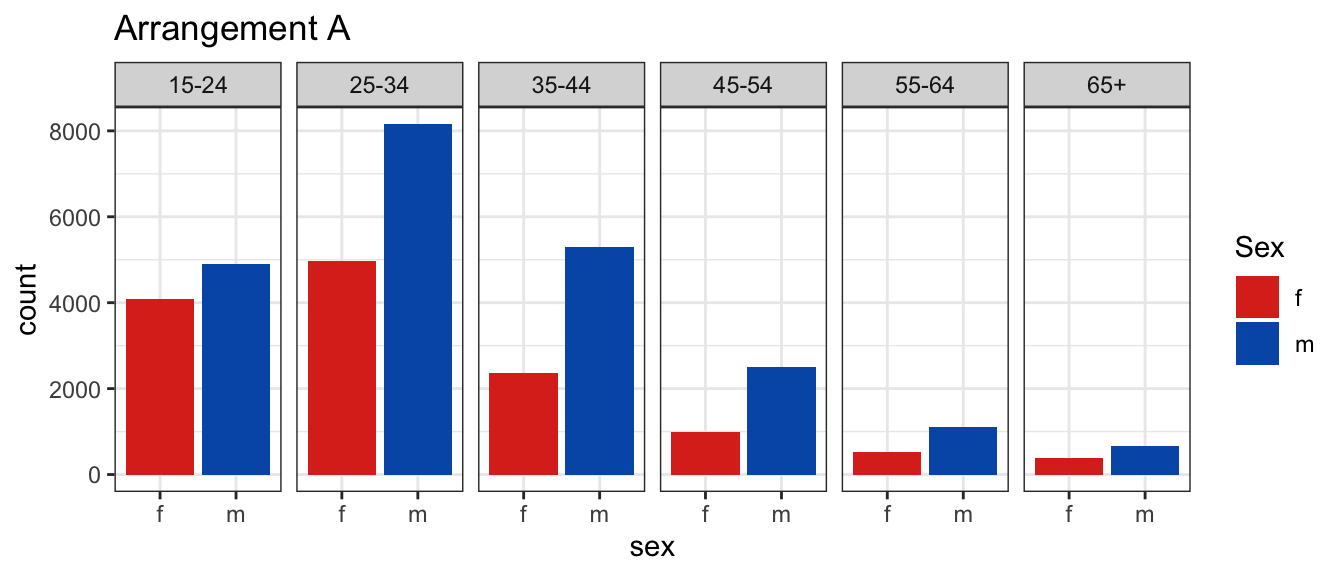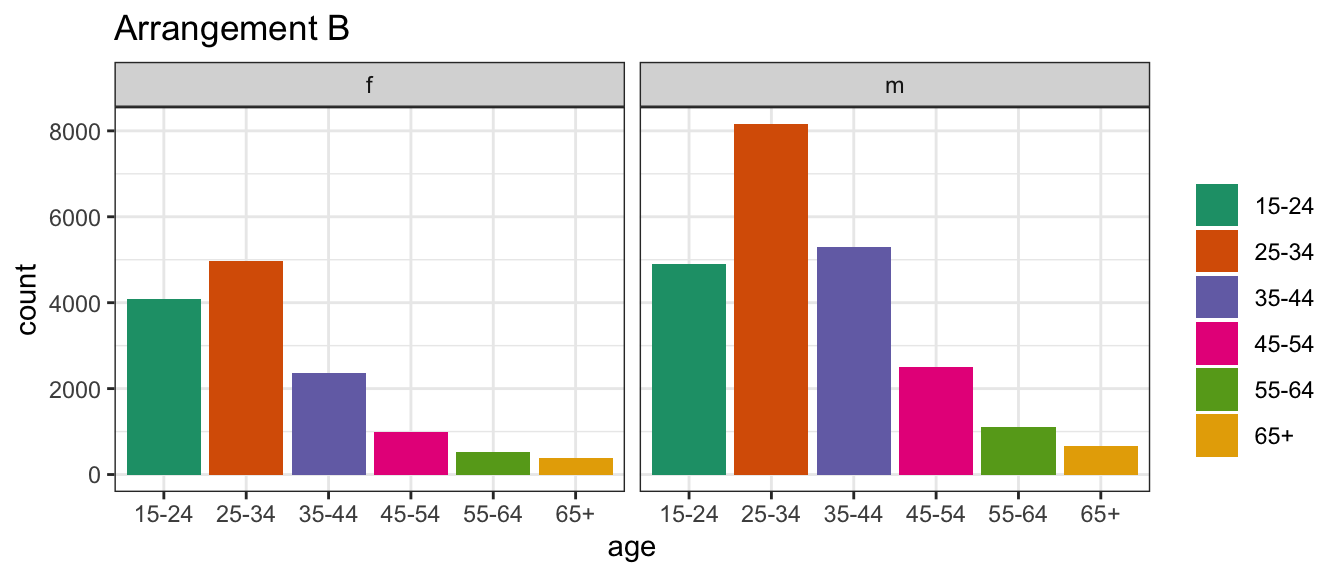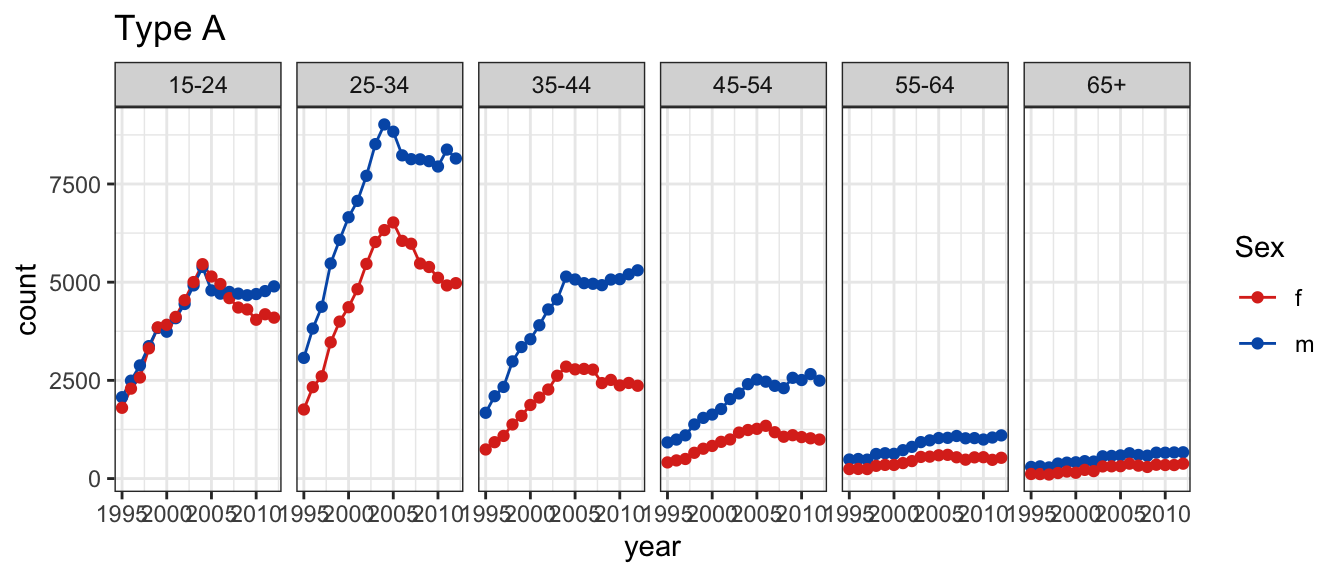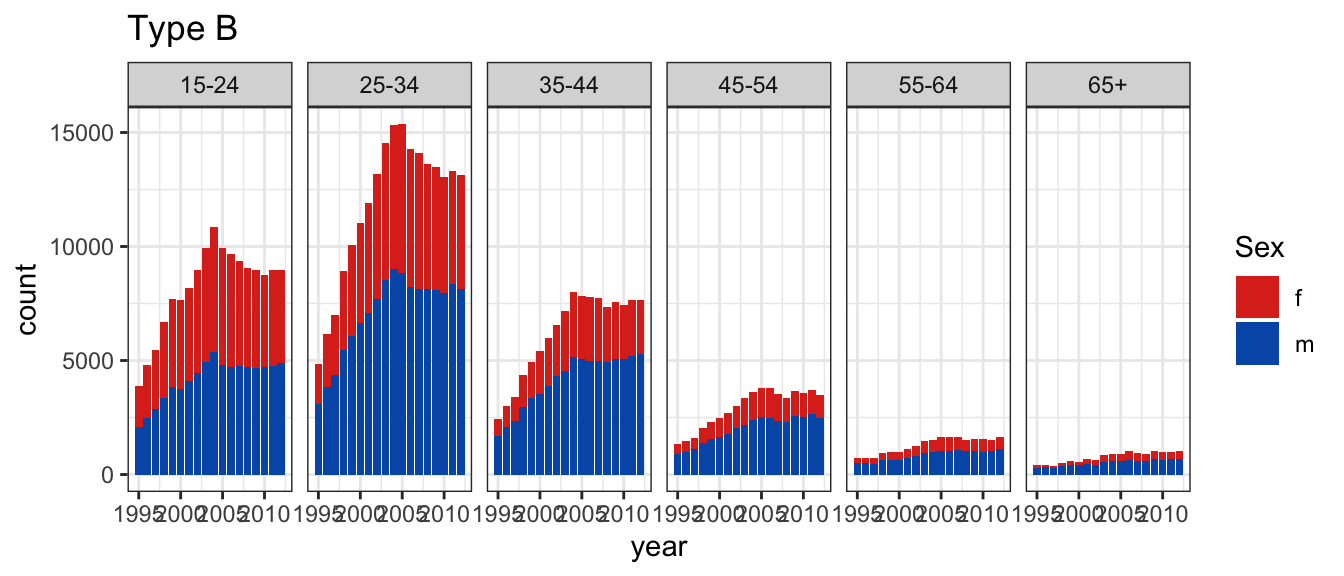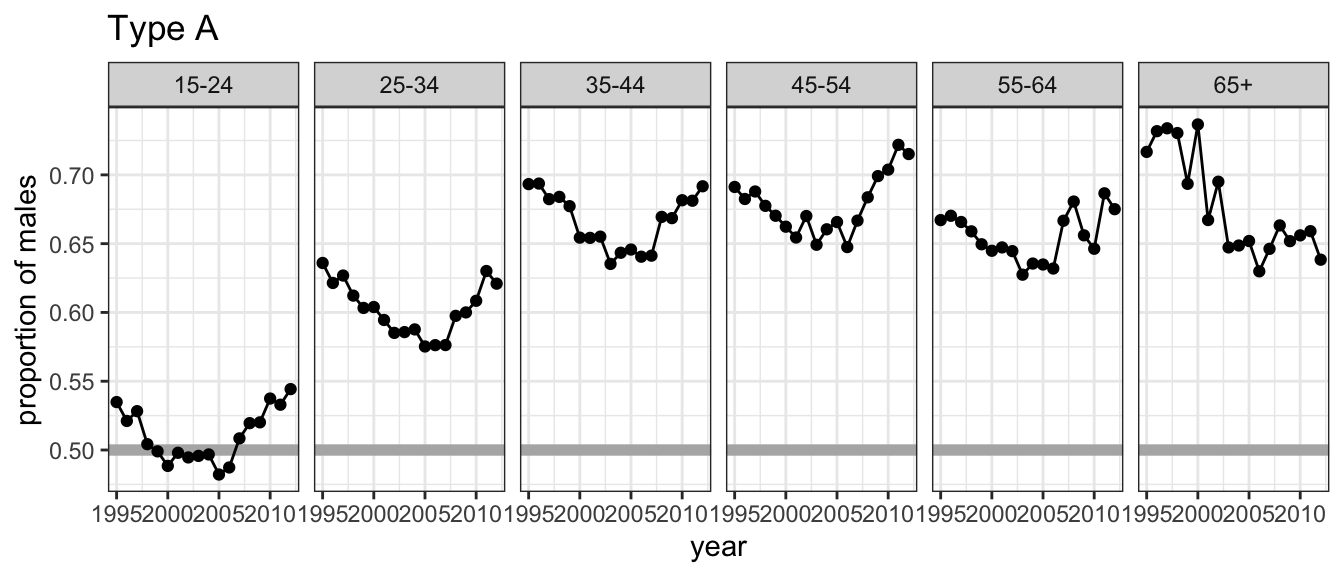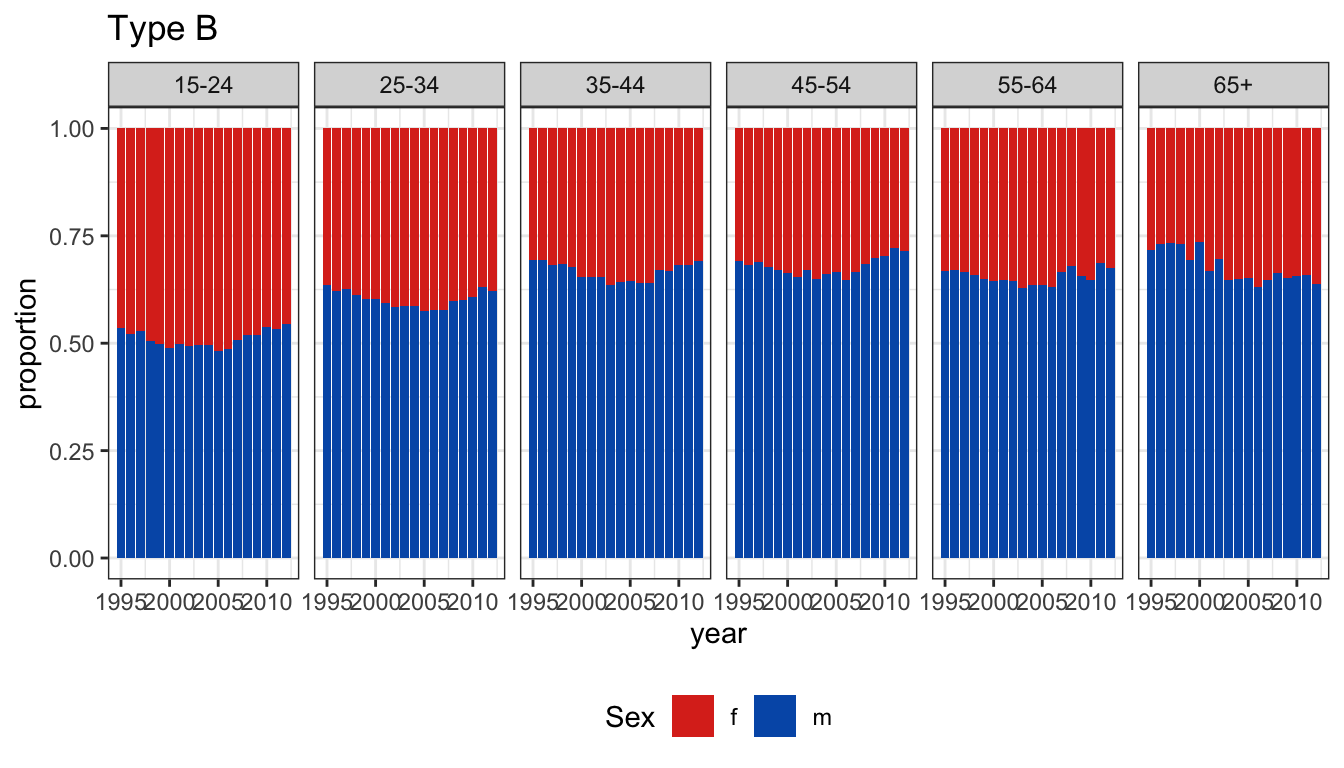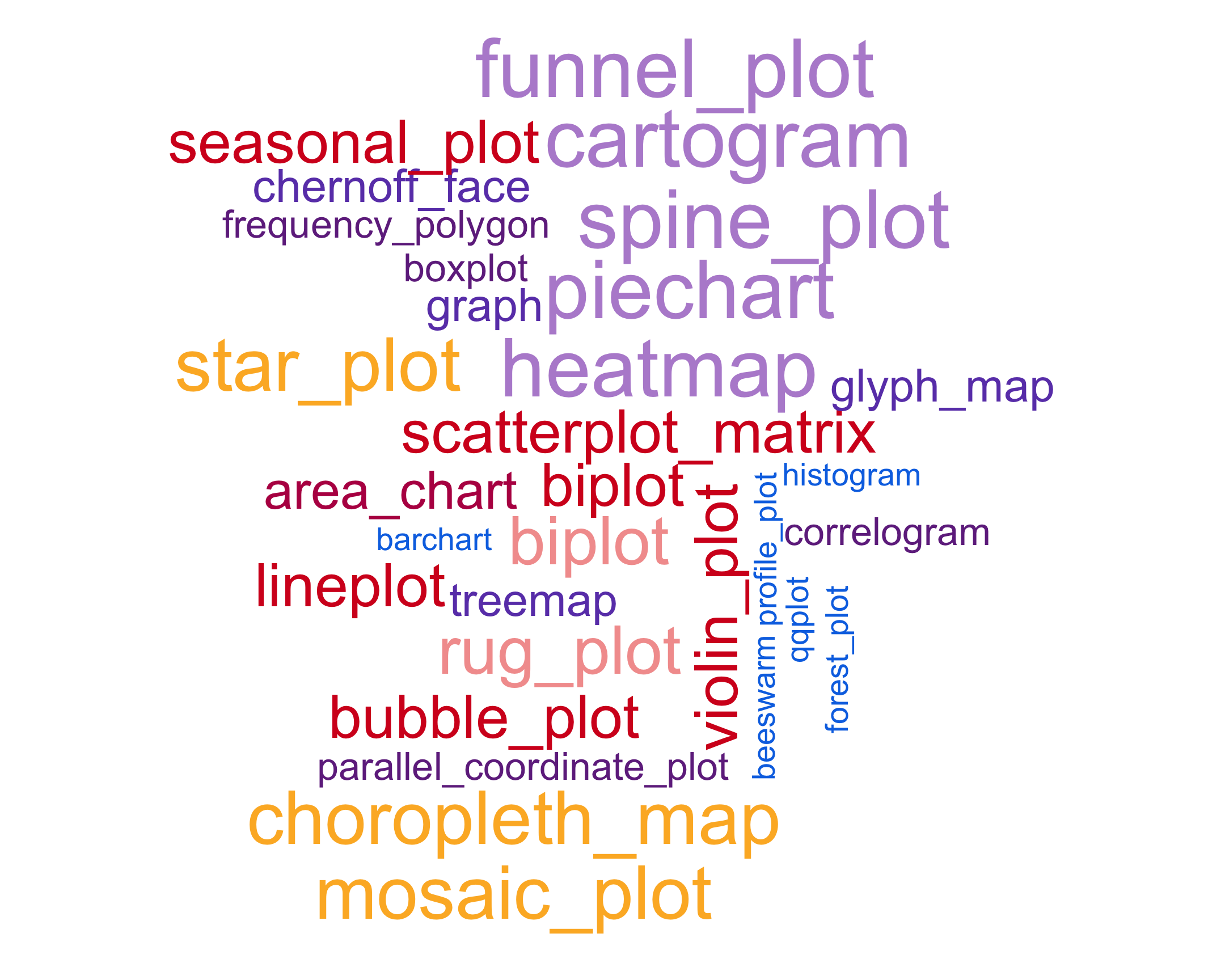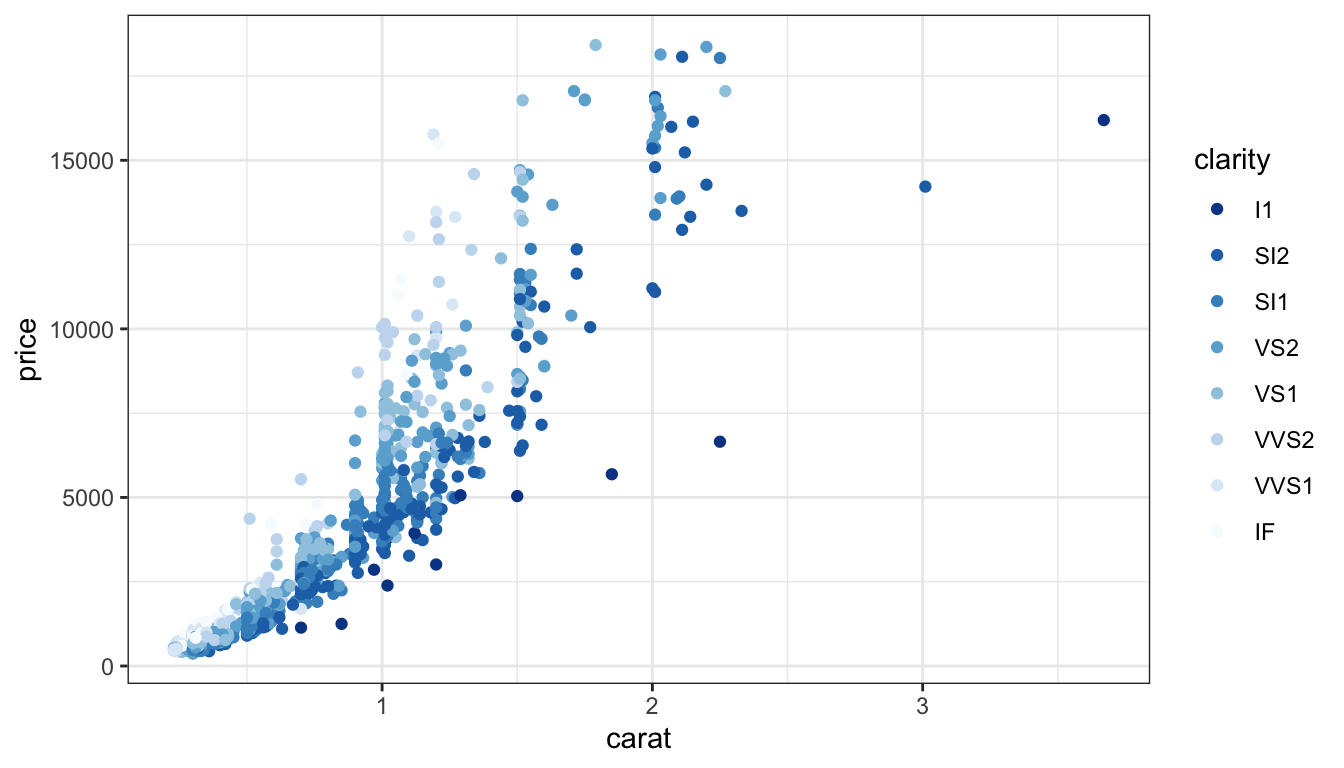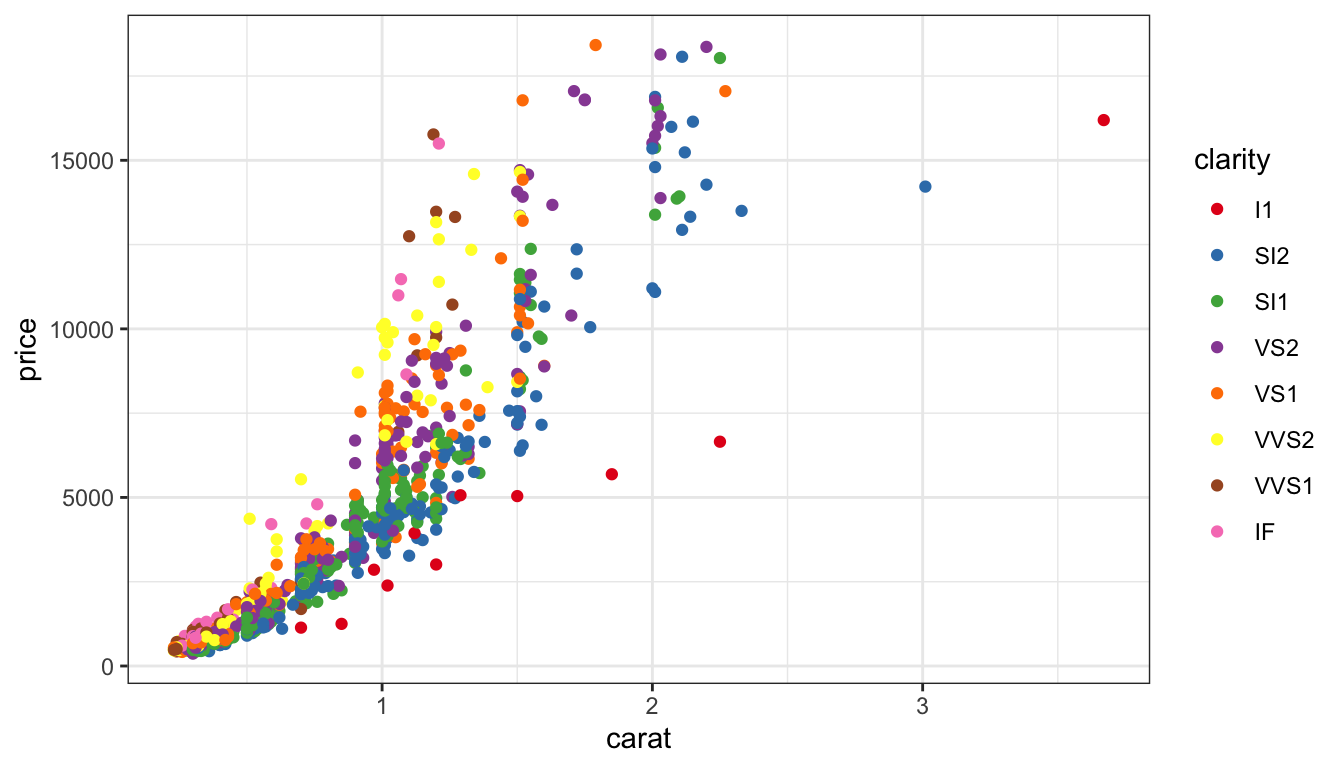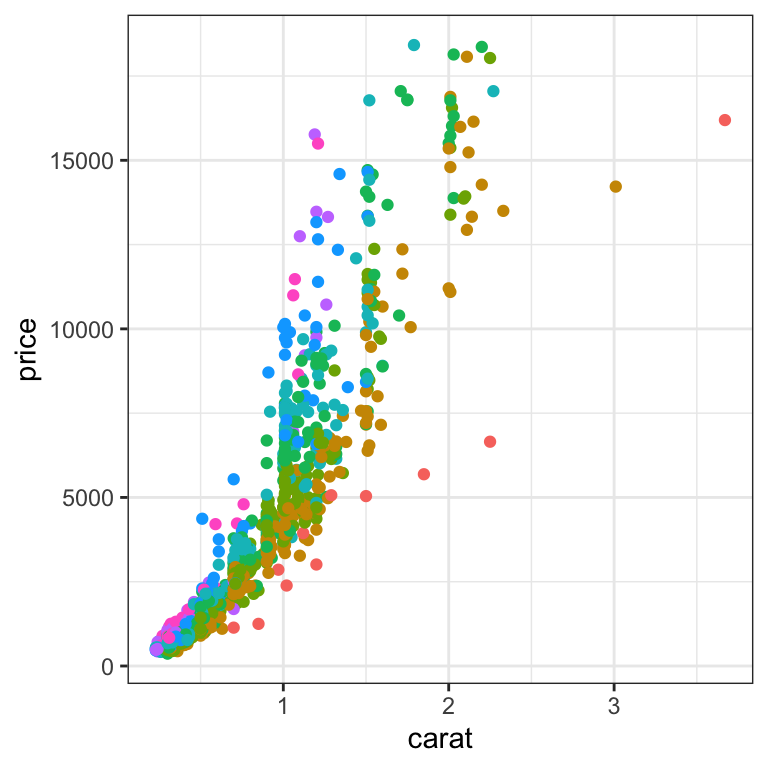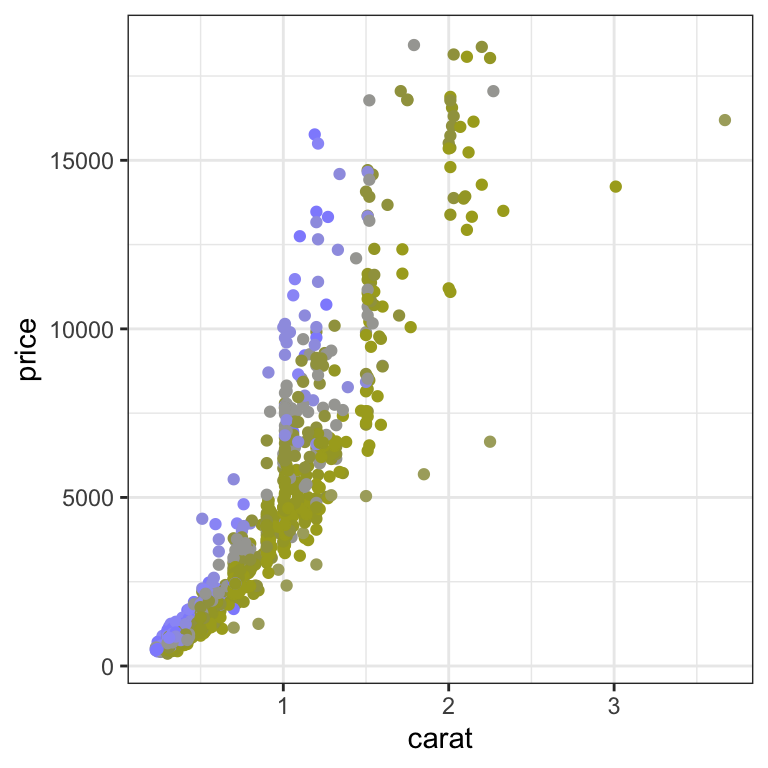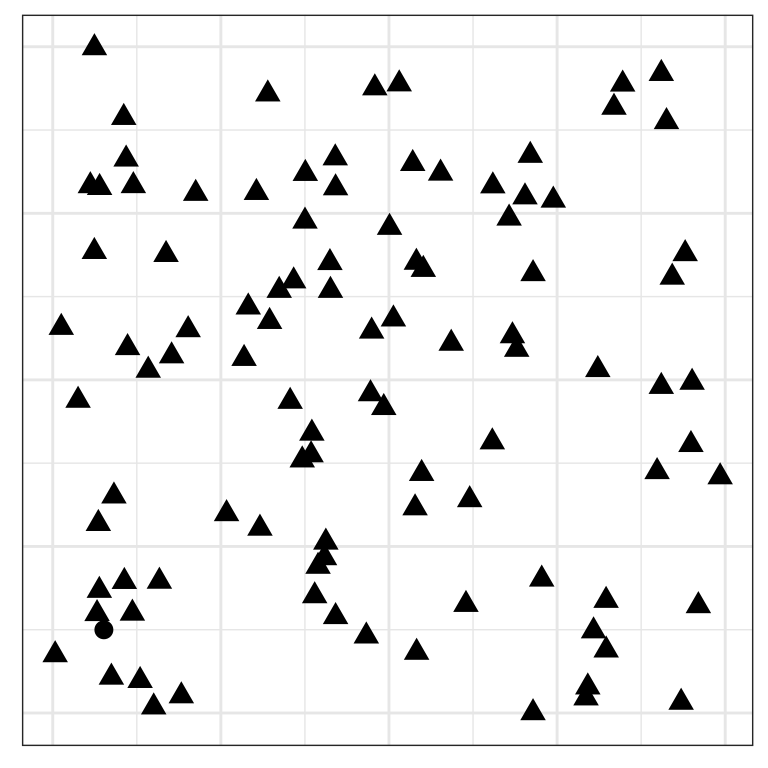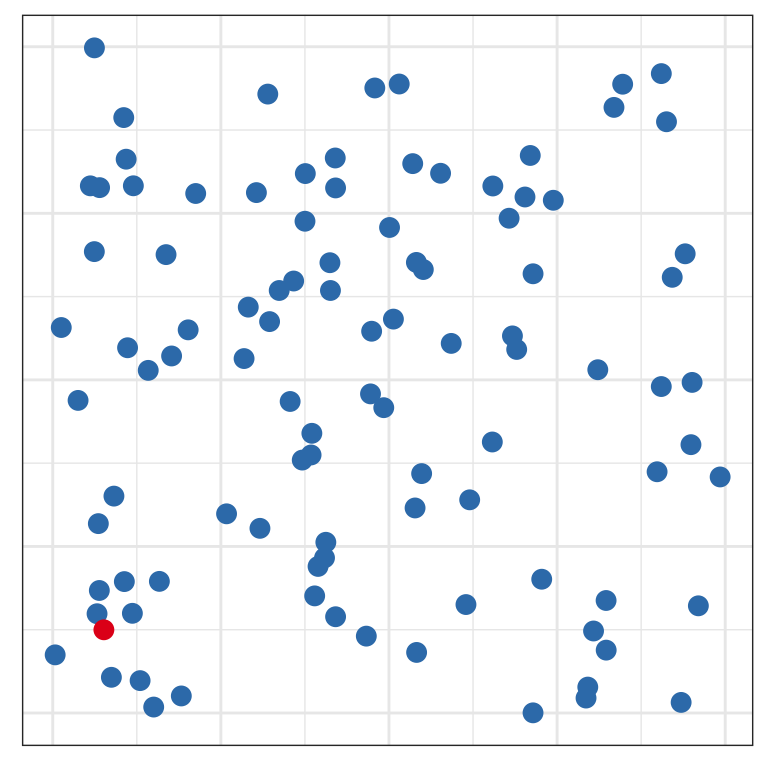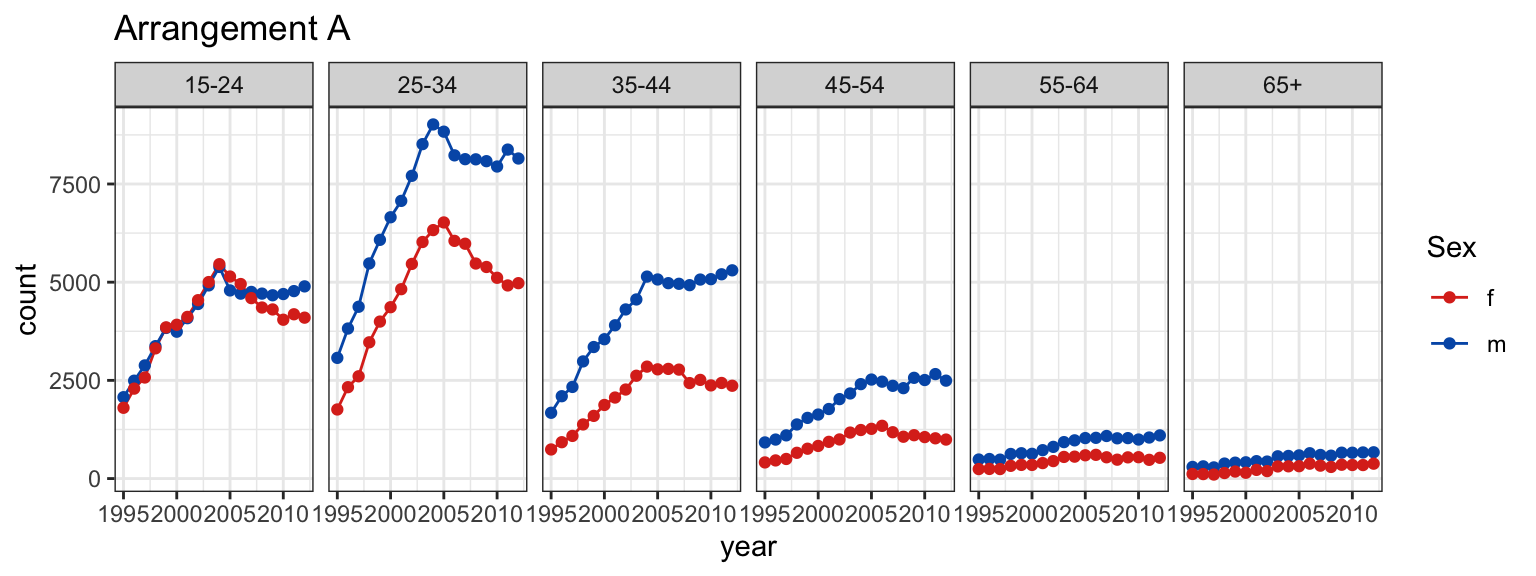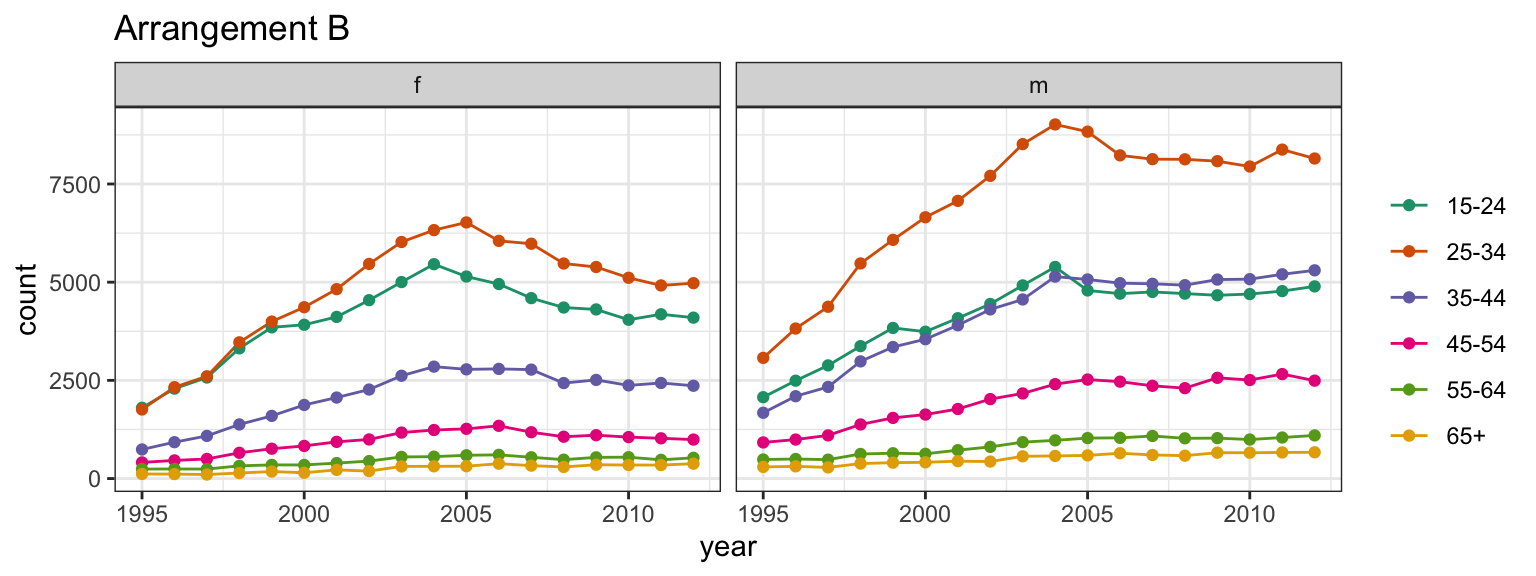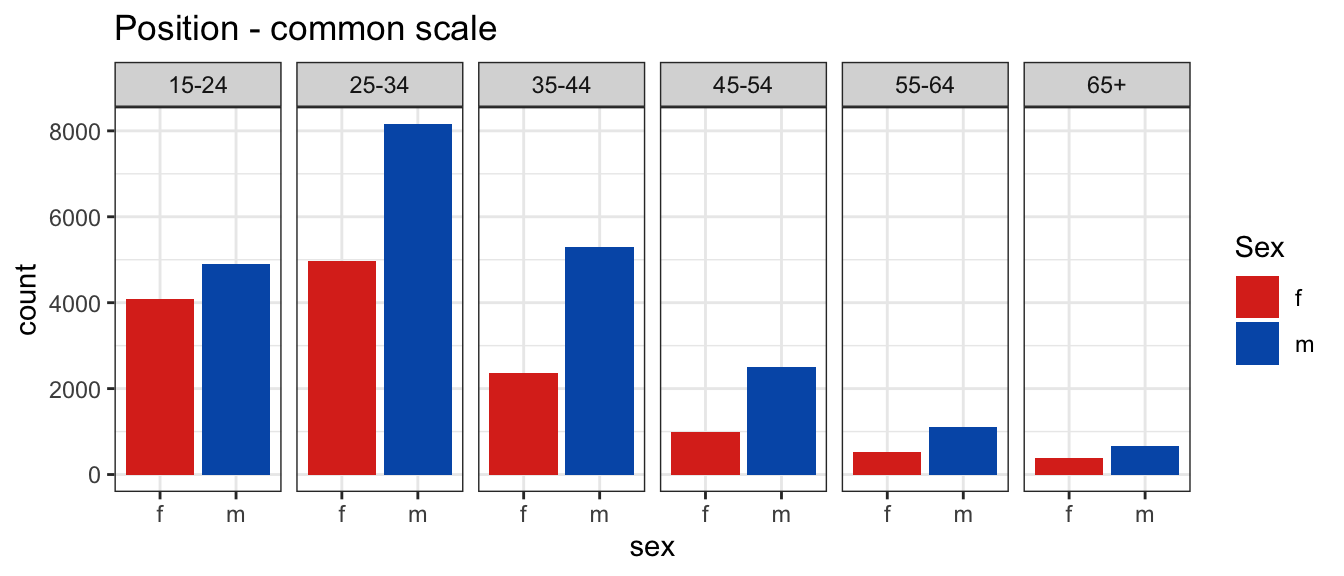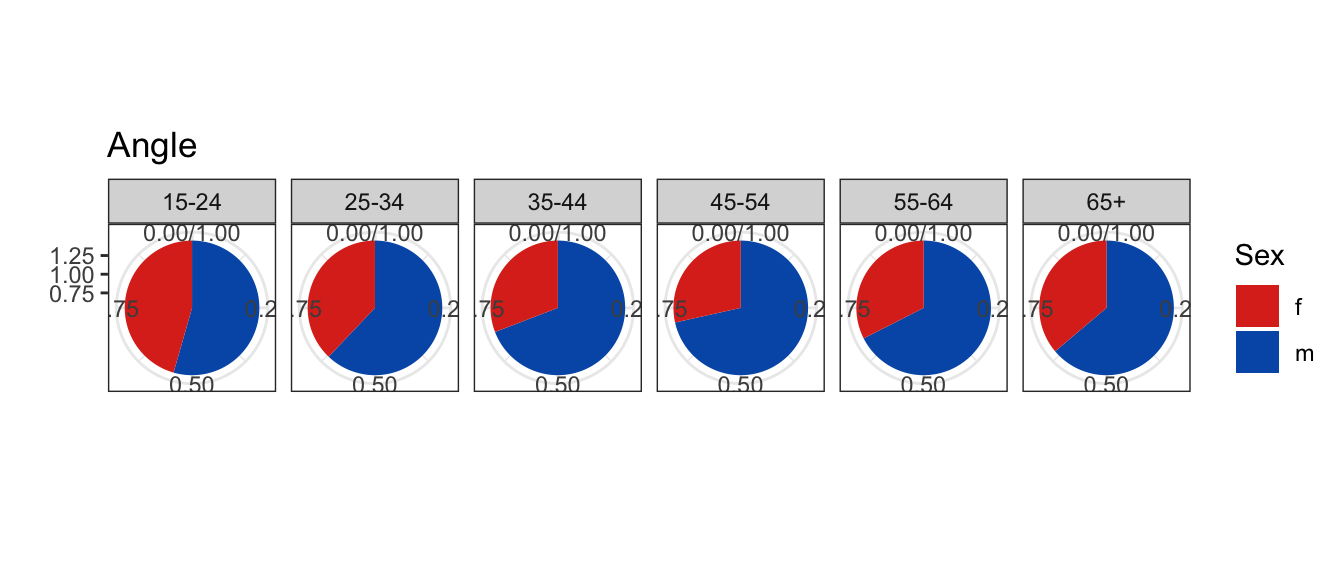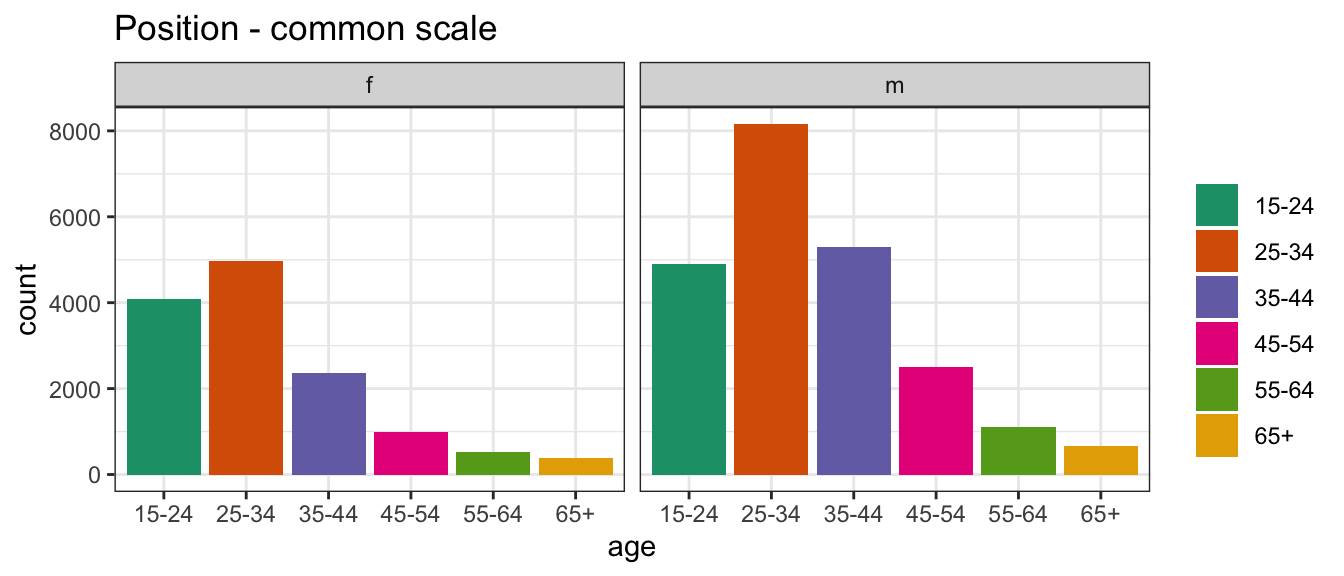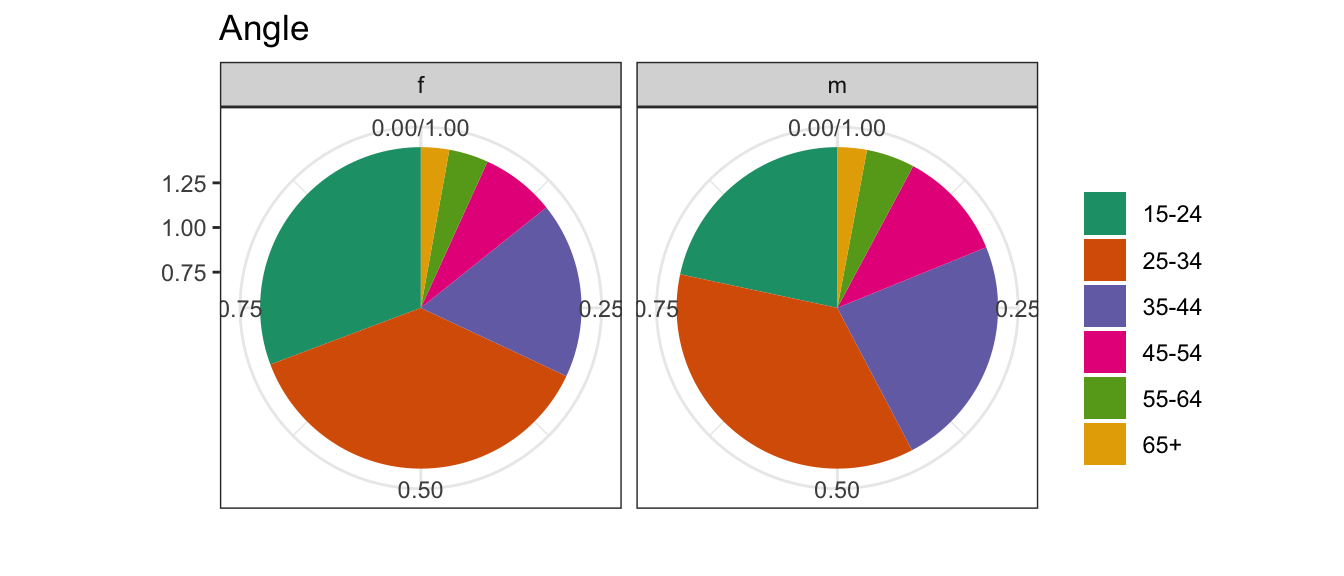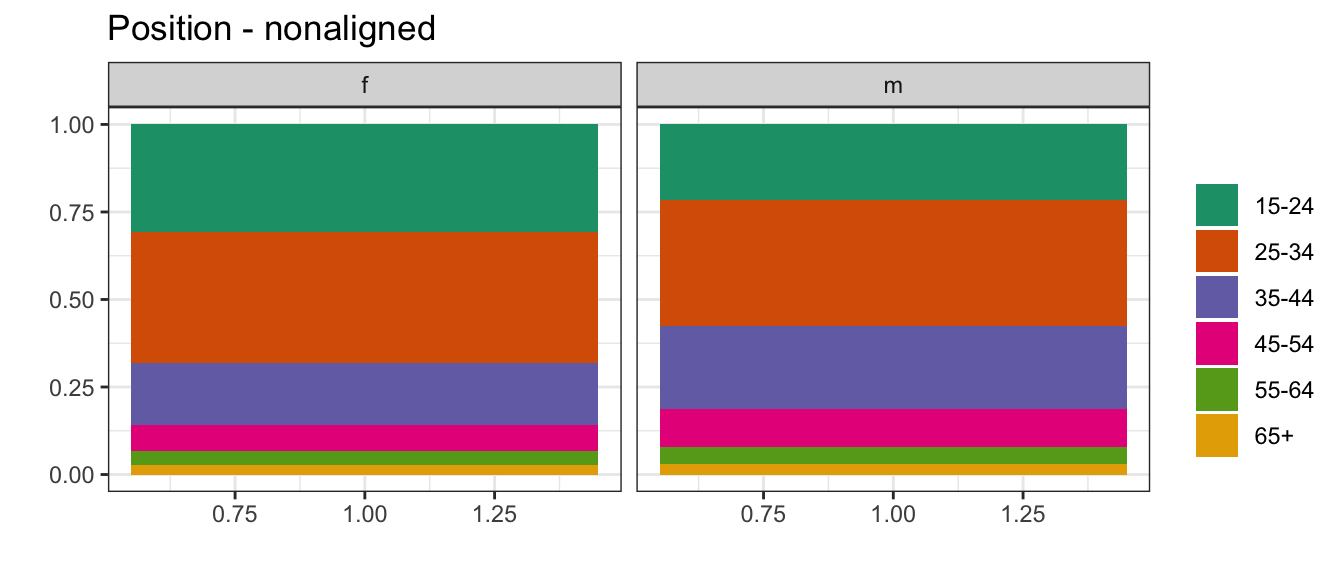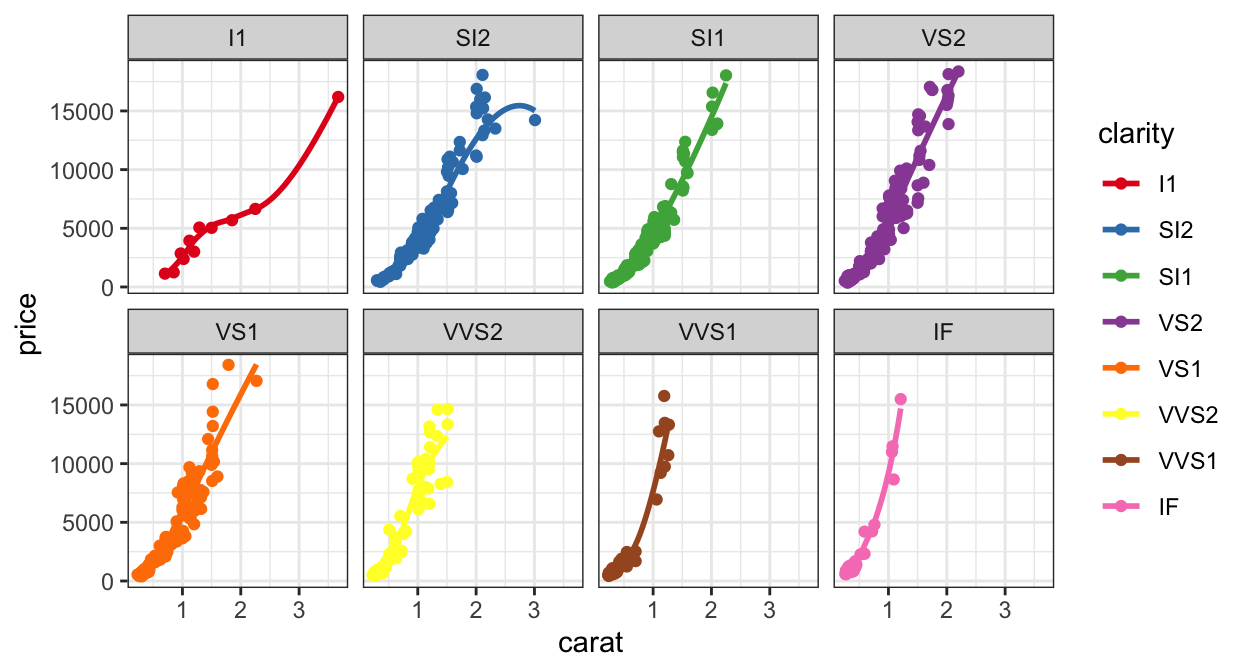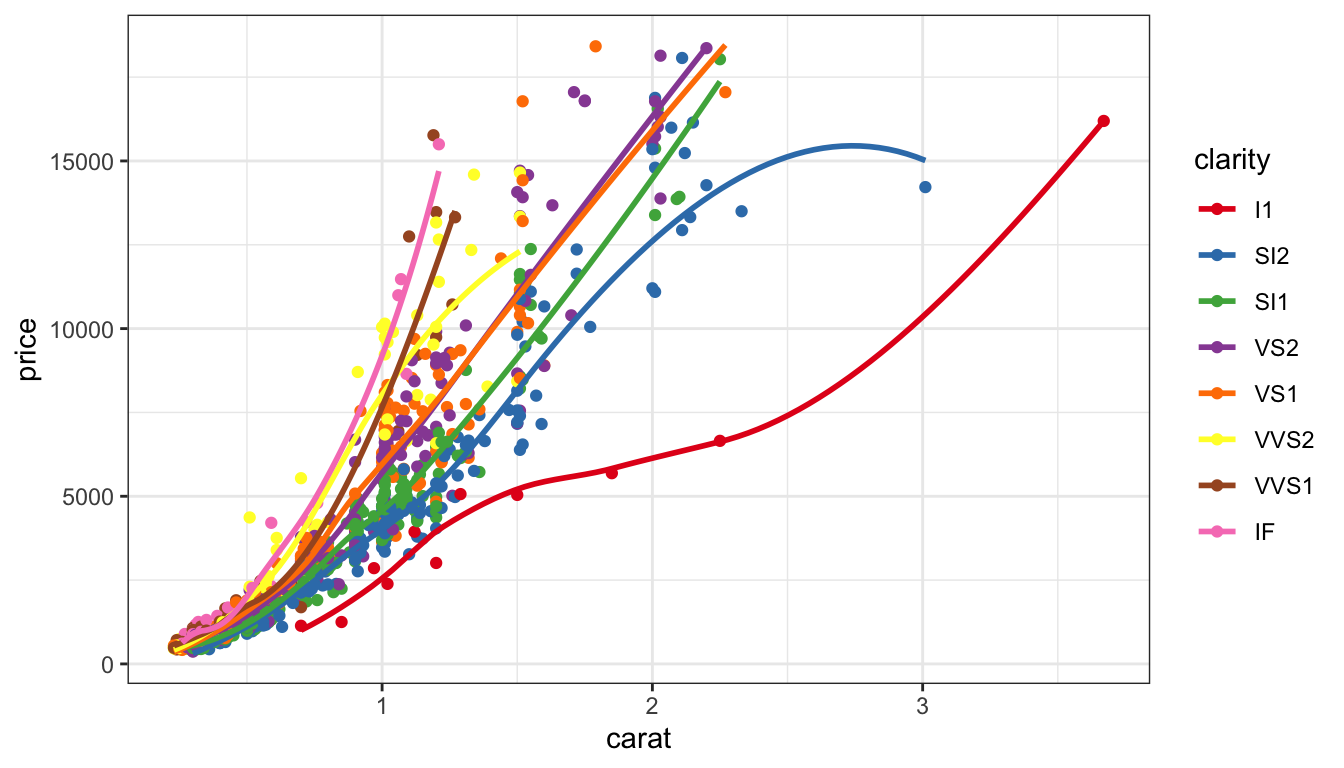# A tibble: 6 × 3
sex age count
<chr> <chr> <dbl>
1 m 15-24 4893
2 m 25-34 8149
3 m 35-44 5302
4 m 45-54 2493
5 m 55-64 1099
6 m 65+ 669Visual perception and effective plot construction
SISBID 2025
https://github.com/dicook/SISBID
Game: Which plot wears it better?
Coming up: 2 different plots of 2012 TB incidence (e.g. newly diagnosed cases) in Kenya, based on variables:
- In arrangement A, separate plots are made for age, and sex is mapped to the x axis.
- Conversely, in arrangement B, separate plots are made for sex, and age is mapped to the x axis.
At which age(s) are the counts for males and females relatively the same?
Which plot makes this question easier to answer?
TWO MINUTE CHALLENGE 🔮 👽 👼
At which age(s) are the counts relatively similar across sex?
Which plot makes this easier? What do we learn from each? What’s the focus? What’s easy? What’s harder?
TWO MINUTE CHALLENGE 🔮 👽 👼
Write out a question that would be easier to answer from arrangement B.
Go to www.menti.com and use the code 2979 2396.
Three Variables
Next, we have two different plots of TB incidence in Kenya, based on three variables:
# A tibble: 10 × 4
year sex age count
<dbl> <chr> <chr> <dbl>
1 1995 m 15-24 2072
2 1995 m 25-34 3073
3 1995 m 35-44 1675
4 1995 m 45-54 920
5 1995 m 55-64 485
6 1995 m 65+ 296
7 1995 f 15-24 1802
8 1995 f 25-34 1759
9 1995 f 35-44 741
10 1995 f 45-54 411- In plot type A, a line plot of counts is drawn separately by age and sex, and year is mapped to the x axis.
- Conversely, in plot type B, counts for sex, and age are stacked into a bar chart, separately by age and sex, and year is mapped to the x axis
Is the trend for females generally decreasing over time? Which plot makes this easier?
TWO MINUTE CHALLENGE 🔮 👽 👼
Which type of plot makes it easier to answer
Is the trend for females generally decreasing over time?
01:50
TWO MINUTE CHALLENGE 🔮 👽 👼
What are the pros and cons of each way of displaying the same information? Should specific limits on axes be made?
Should the limits of the y axis in plot A include 0 (zero)?
00:30
TWO MINUTE CHALLENGE 🔮 👽 👼
Plot A shows the proportion as a line plot.
Plot B shows stacked bars scaled to 100% for females and males.
Is there an age effect in the proportion of incidence by gender? Is there a temporal trend in the proportions?
01:05
Perceptual principles
- Hierarchy of mappings
- Pre-attentive: some elements are noticed before you even realise it.
- Color palettes: qualitative, sequential, diverging.
- Proximity: Place elements for primary comparison close together.
- Change blindness: When focus is interrupted differences may not be noticed.
Hierarchy of mappings
TWO MINUTE CHALLENGE 🔮 👽 👼
Come up with a plot type for each of the mappings.
- Position - common scale (BEST)
- Position - nonaligned scale
- Length, direction, angle
- Area
- Volume, curvature
- Shading, color (WORST)
(Cleveland, 1984; Heer and Bostock, 2009)
01:40
Color palettes
- Sequential,
- Diverging,
- Qualitative
Color Brewer annotates palettes with attributes.
Sequential
Sequential
Default brewer sequential scale, blues.
Focus is on the dark blue.
Diverging
- Emphasize both ends, high AND low
- De-emphasize middle
Qualitative
Map qualitative variables to most differentiated set of colors.
It’s possible to have too many colours to perceive differences.
TWO MINUTE CHALLENGE 🔮 👽 👼
Of the previous four colour schemes on the same data, which would be the most appropriate? Why?
viridisColorBrewersequentialBluesColorBrewerDivergingPRGnColorBrewerCategoricalSet1
00:50
Color blind-proofing
- Online checking tool coblis: upload an image and it will re-map the colors for different colour perception issues.
- The package
colorblindhas color blind friendly palettes (Susan: but the colours are awful 😭).
Color blind Simulation
Pre-attentive
Can you find the odd one out?
Pre-attentive
Is it easier now?
Proximity
Place elements that you want to compare close to each other. If there are multiple comparisons to make, you need to decide which one is most important.
Mapping and proximity
Mapping and proximity
Change blindness
Which has the steeper slope, VS1 or VS2?
Change blindness
Core principles
- Make a plot of your data!
- The hierarchy matters if the structure is weak or differences b/w groups are small.
- Knowing how to use proximity is a valuable and rare skill
- Use of colour: don’t over use
- Too many colours
- Mapping cts variable to colour to add another dimension
Core principles
- Show the data!
- Statistics are good if there’s too much data
- Always plot the data for yourself to see the variability
- One plot is never enough
- Plot the data in different ways
- Understand the relationships between variables
Your turn
This builds on the exercise from the previous session.
- Using your choice of country, for example, Australia, make a set of plots to explore the TB incidence among males relative to females over different age groups for 2012.
- Choose your best plot to answer this question: Is there a higher prevalence of TB among younger women in 2012?
07:00
Resources
- Claus Wilke, Fundamentals of Data Visualization
- Naomi Robbins, Creating More Effective Graphs
- Cleveland, McGill (1984) Graphical perception: Theory, experimentation
- Heer, Bostock (2010) Crowdsourcing graphical perception
- Antony Unwin, Graphical Data Analysis with R
- Wagemans et al. (2012) A Century of Gestalt Psychology in Visual Perception:
- Wickham (2013) Graphical criticism
- VanderPlas, Goluch, Hofmann (2019) Framed! Reproducing & Revisiting 150 y/o Charts
- VanderPlas, Hofmann (2015) Signs of the Sine Illusion
 This work is licensed under a Creative Commons Attribution-NonCommercial-ShareAlike 4.0 International License.
This work is licensed under a Creative Commons Attribution-NonCommercial-ShareAlike 4.0 International License.
